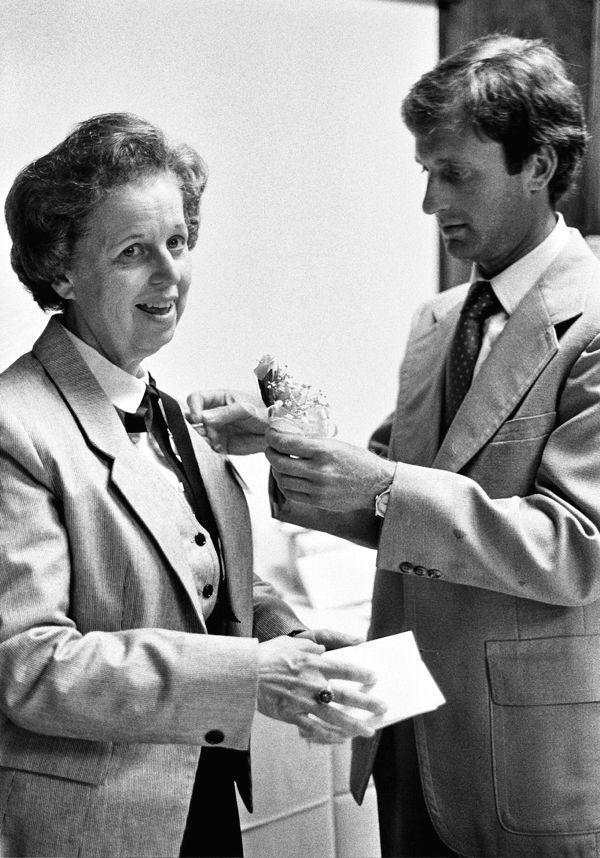From Bob Plager to Redd Fox: Jewish Hospital remembered
Published August 2, 2017
The 1960s represented a transformational period for medical advancements in the United States. That was especially evident at the Jewish Hospital of St. Louis, which in 1963 became a major teaching hospital, in conjunction with Washington University Medical Center.
Jewish Hospital no longer exists as a freestanding institution, having merged with Barnes Hospital in 1996 to form BJC. But the memory of the hospital remains, and a display honoring its history is open to the public on the seventh floor of Bernard Becker Medical Library through Aug. 31.
One observer of the growth of the hospital during that era was Lydia Motchan, my mom. On July 10—her 96th birthday—I took her to the exhibit and we talked about her memories and 16-year-career at Jewish Hospital.
Lydia Motchan was hired at Jewish Hospital in 1967, working in the public relations department. She became editor of the hospital’s employee publication, known as 216 (the address of the hospital’s main entrance on South Kingshighway Boulevard).
“I didn’t know much about photography, but I knew that ASA [film speed] was important, so I wrote the ASA on my hand,” she said. “One time I had to take a photo of (St. Louis Blues defenseman) Bob Plager when he was released after surgery. I went to the side entrance and there he was in a wheelchair—surrounded by Playboy bunnies.”
Plager was a dashing hockey player and notable bachelor back then, which explained his escorts. St. Louis sports fans were still learning about professional hockey in 1969. The Blues were in their second full season. The team physician was Dr. Jacob Probstein, who was the former director of surgery at Jewish Hospital. He and his counterpart with the Montreal Canadiens made a big impression on my mom when she interviewed the pair.
“I learned that Dr. Probstein and Dr. [Douglas] Kinnear both smoked pipes,” she said. “Neither one of them really looked like medical men. Dr. Kinnear had striking black hair—he could have probably passed for an astronaut. Dr. Probstein dressed fastidiously. He looked more like a hotel magnate.”
While interviewing the two hockey docs for 216, she learned some of the unusual habits of NHL players, like the practice of swallowing a spoonful of honey just before a game to get a quick blast of energy. She also discovered NHL players were more than a little stoic when they required treatment.
“Dr. Kinnear told me Canadiens players wouldn’t even let him use a local anesthetic to suture a laceration,” she said.
The world of sports was not new to my mom. In the 1940s one of her first jobs was secretary for the circulation manager at The Sporting News. J. G. Taylor Spink, the publisher of the paper, often gave her a ride home in a chauffeur-driven limo on Sundays. She learned about the newspaper business and saw significant events up close. In 1944, she watched the Cardinals play the St. Louis Browns in the World Series at Sportsman’s Park.
In her reporter role at Jewish Hospital, she had an opportunity to meet famous people from the world of entertainment, too.
“At the Jewish Hospital Auxiliary annual meeting in April 1969 at the Chase Hotel, I interviewed Barbara Walters,” she said. “She was very professional and very young. Then there was Redd Fox, from the TV show ‘Sanford and Son.’ He was visiting patients. I saw him as he was leaving the Kingshighway entrance with a trail of fans in tow.”
Even without a mastery of photography, she did well enough as editor of 216 to be recognized with an award presented by the Industrial Press Association of St. Louis. Soon afterwards, she was selected by the hospital administration to assume a more prominent role, executive secretary to hospital president David Gee.
“The executive offices had a whole row of secretaries, and they all would have loved to have had the job, and I kept saying to David that I wasn’t qualified. The more I said it, the more he said I could do it.”
She did the job well enough to get a title change as assistant to the president in June 1974. She provided key secretarial support for David Gee, often handling a mountain of correspondence.
“If David was coming back from a trip, and I prepared a stack of letters that I wrote for his signature, when he would sign them all without changing anything, I felt really good about it.”
During the mid-1970s, Jewish Hospital continued to gain prominence in part because it recruited top talent, like Dr. Arthur Baue (surgery), Dr. William Peck (medicine) and Dr. Carl Pierce (pathology).
“David dealt with these medical staff. These were prestigious folk, they didn’t really show their egos, but they had a presence about themselves.”
One doctor in particular she connected with showed little sign that he was a famous researcher. That was Michael Somogyi, who had his doctorate degree. He was a Hungarian biochemist known internationally for his work in diabetes research and insulin. Back in the 1960s, my mom knew him more as a workplace friend.
“He was the one friend I made there who you can Google and find an entire dissertation on Wikipedia. Medical schools around the world still study his research and the ‘Somogyi effect’ (rebounding high blood sugar that is a response to low blood sugar).
“I would sit across from him at lunch sometimes, often enough that he became a modest, unassuming friend, and he would get out his apple, and his little Swiss army knife and he’d cut a section off and give it to me. He was an old school gentleman.”















